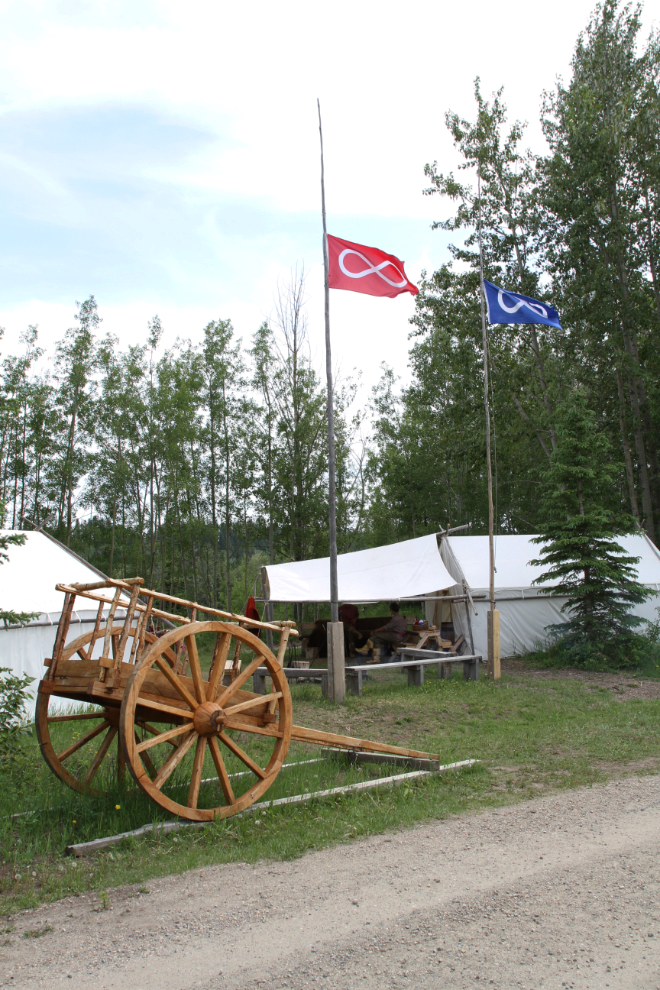Exploring Rocky Mountain House National Historic Site, Alberta
After picking the motorhome up from Westend RV Repairs at noon, our next destination for the rest of Day 44 of the trip – Friday, June 8th – was Rocky Mountain House National Historic Site. I’d visited the site before in 2013, but in early May when nothing was open.
There are two entrances to the site. On my previous and this morning’s quick look, I had come in via the south-western entrance where the campground and other accommodations are. This time, I used the main entrance, which is much nicer.

While the campground entrance takes visitors through a forest, the main entrance is flanked by huge open fields, one of which is a bison paddock, and this lovely little marsh.
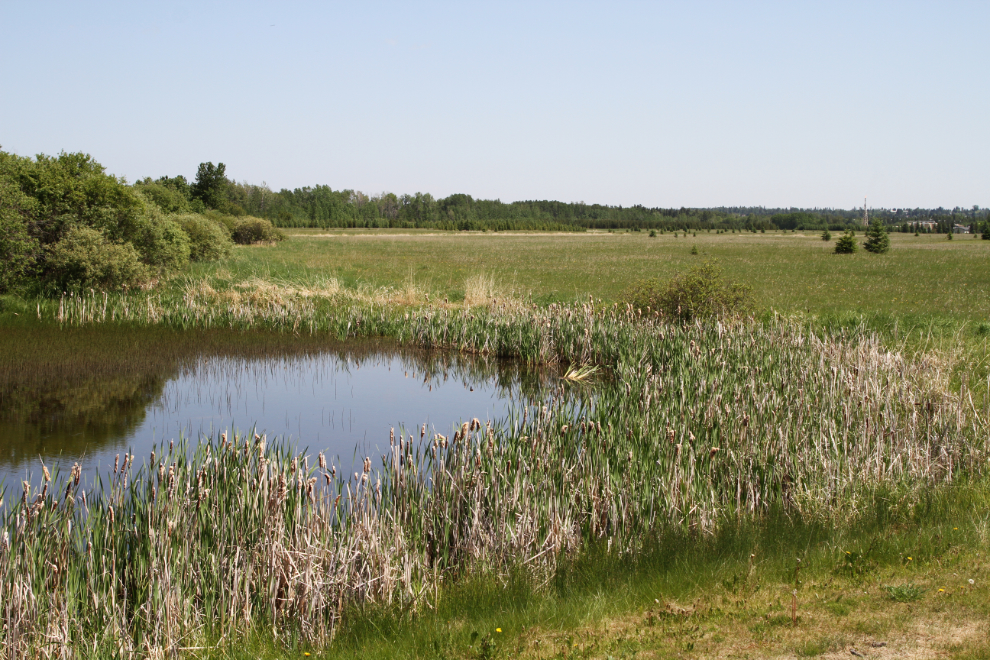
The parking lot at the main entrance is small and not large-RV-friendly, so I went back to a field which had a gravel driveway onto it and where some cars which I assume belonged to staff, and parked there. I learned later that although there are no signs, that is the intent of the field, and it gets heavily used during special events such as Canada Day.
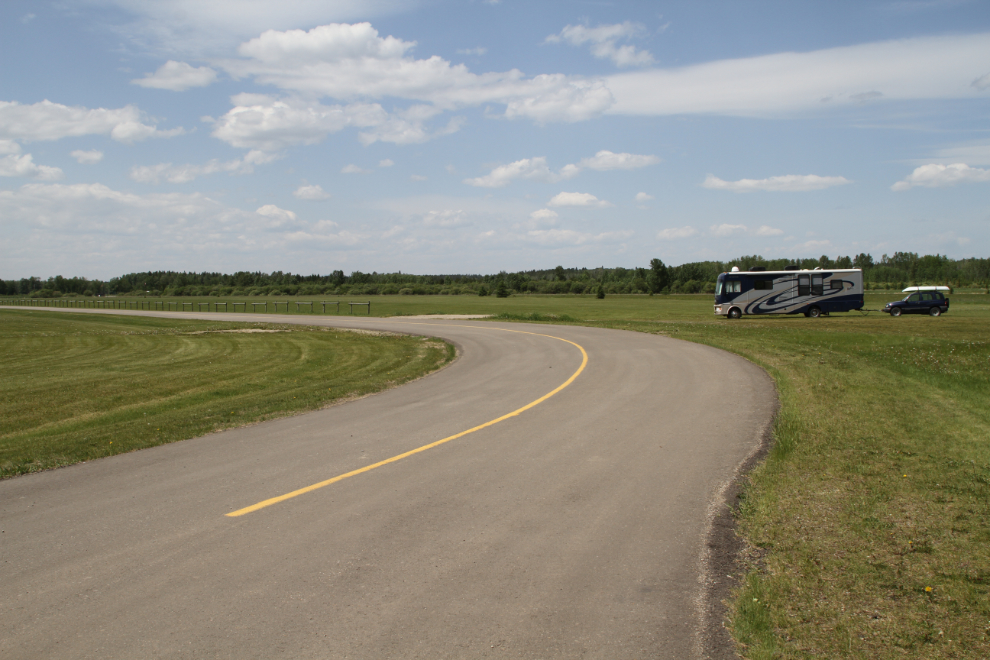
The administration building is very attractive.
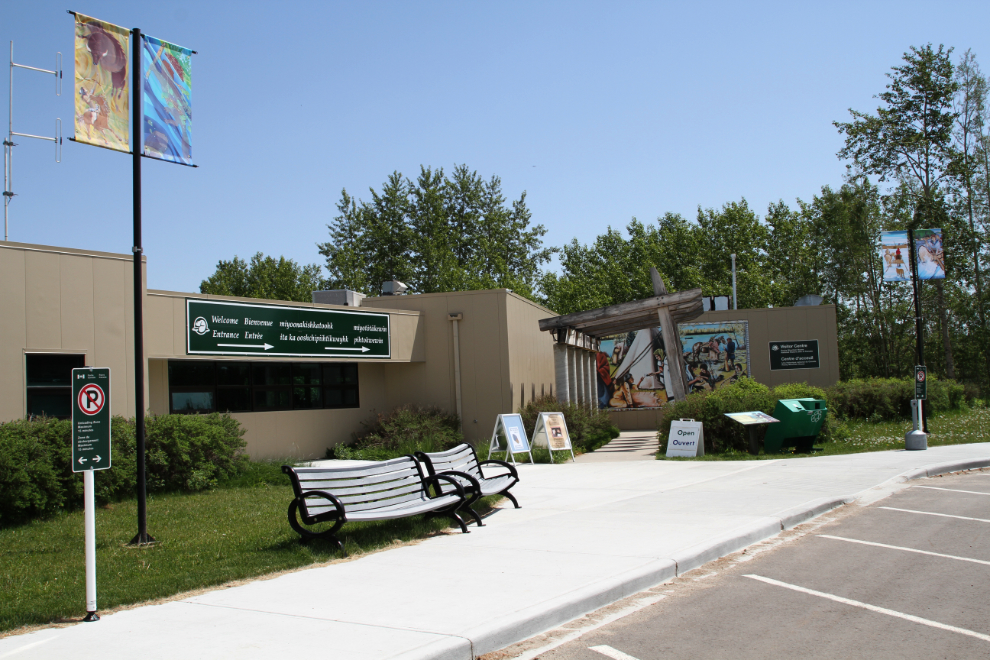
To get to the entrance, visitors walk through these arches and around to the back of the building where the visitor centre is located.

This courtyard is in front of the visitor centre. The sign notes the entry fees ($3.90 for adults, $3.40 for seniors, and youth up to 15 years of age free), and the hours of operation (10:00-5:00 pm, with the gate closing at 5:30). Many signs around the property remind visitors about the gate closing at 5:30.
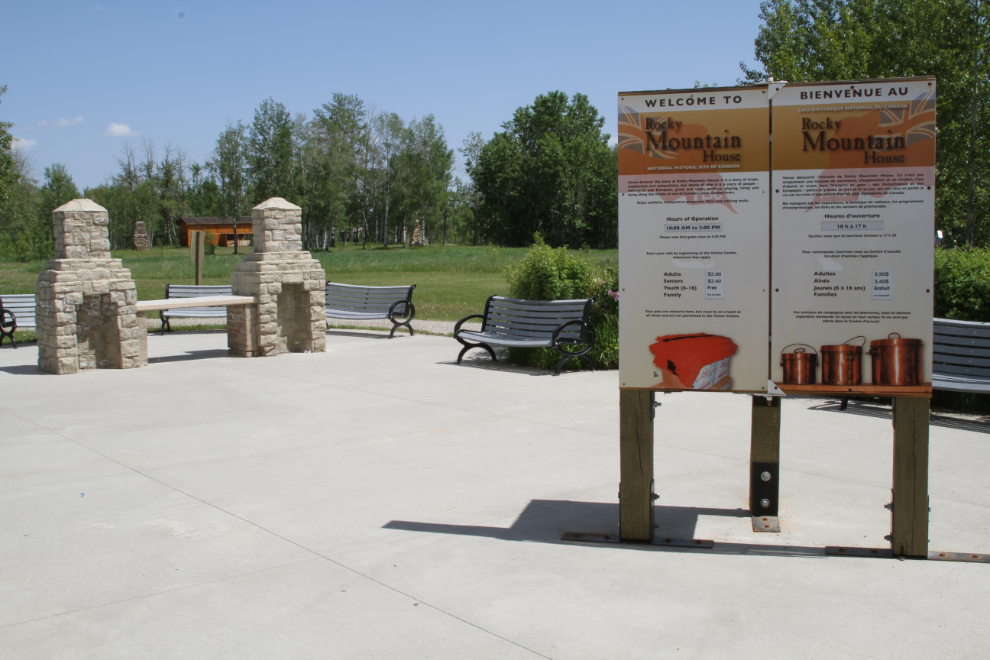
With my wristband in place and brochure in hand, I set out to explore the large site which encompasses the sites of four forts which operated here between 1799 and 1875.
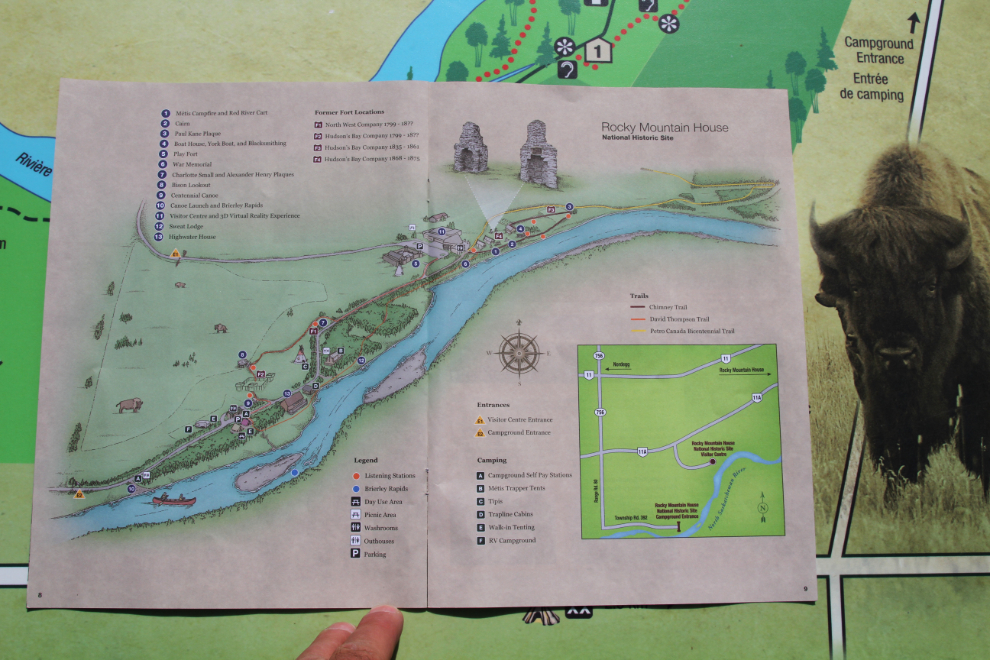
I began on the Chimney Trail, described as a wheelchair-accessible 0.8 km loop that takes about 35 minutes to walk (I took almost an hour).
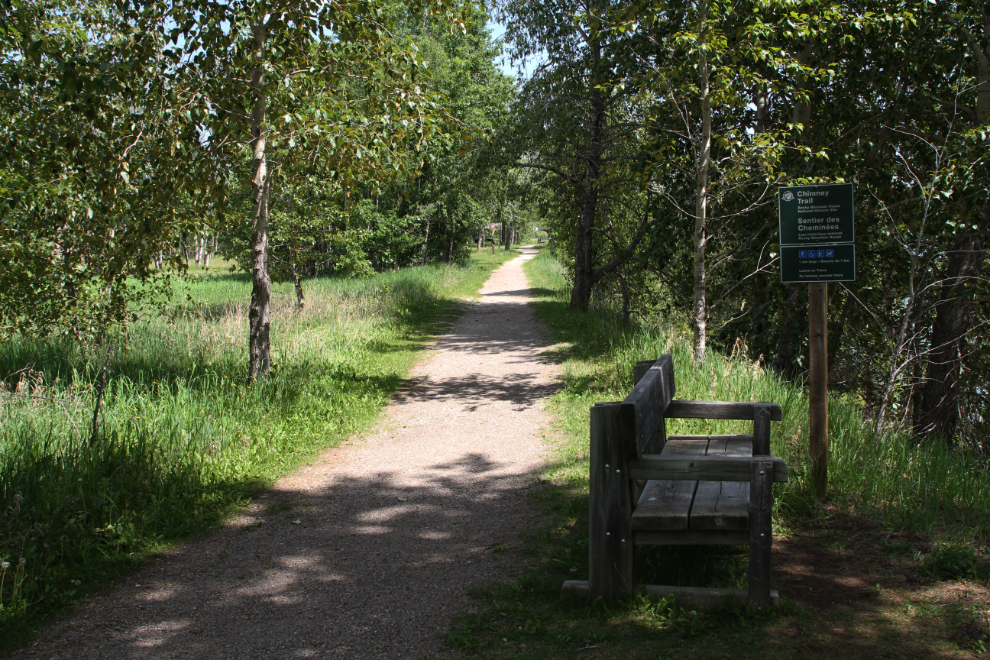
The twin chimneys seen in the next photo are all that remains of the Hudson’s Bay Company’s largest fort at Rocky Mountain House. It opened in 1868, but dwindling markets caused it to close just 7 years later. That was the end of the fur trade in the region.
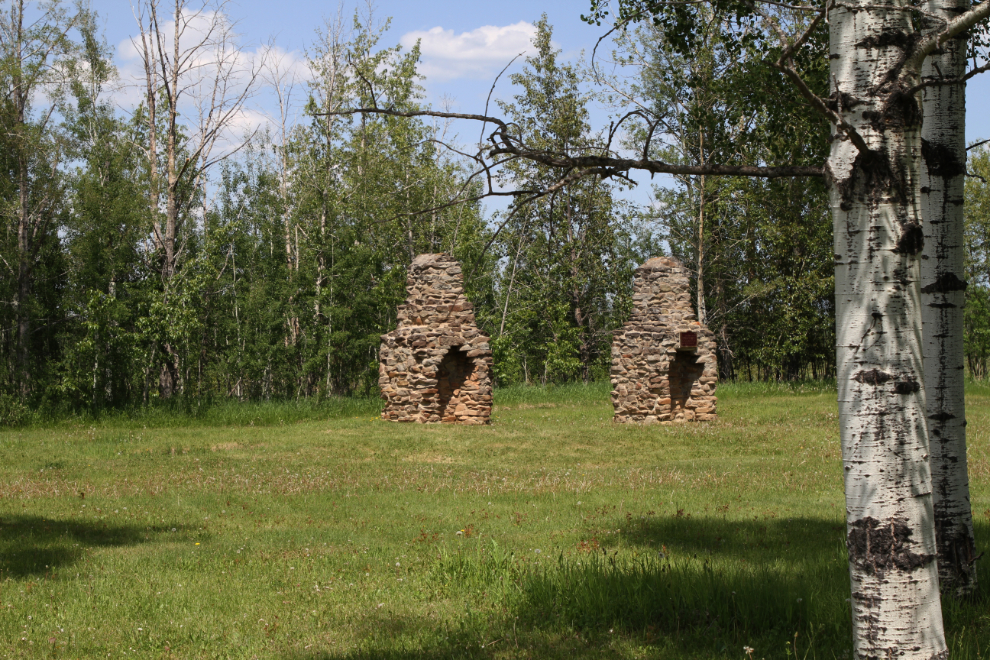
About 1/3 of the site of the last fort has been washed away by floods on the North Saskatchewan River. Parks Canada hopes that a multi-million-dollar bank stabilization project a few years ago will eliminate further losses.

There are several Red River carts around the site. These were one of the main methods of transport while the forts were in operation. Beside this cart is a blacksmith shop where I spent a while talking to the two interpreters.

As well as many interpretive panels, there are 8 “listening stations.” Each has 4 recordings, each of them ranging from about 40 seconds to 3 minutes in length. Unlike many such audio aids, the sound system is excellent, and the listening stations were the reason I took much longer than 35 minutes on the trail.
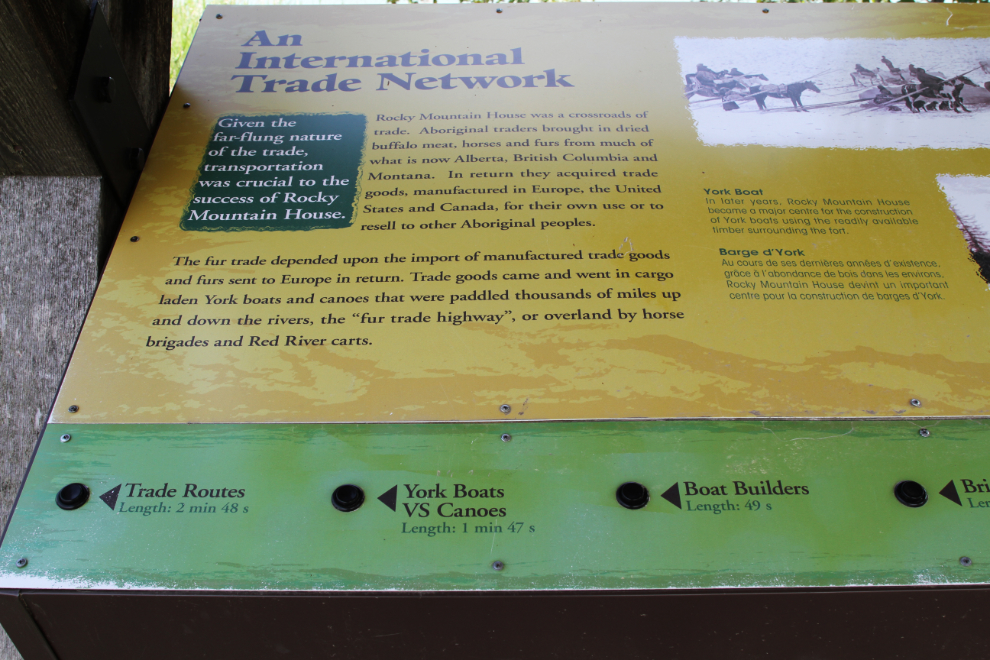
The monument seen in the next photo describes the connection of Paul Kane (1810-1871) to Rocky Mountain House:
In the summer of 1845 the Irish-born artist Paul Kane travelled west as far as Sault Ste. Marie, sketching Indians he encountered along the way. The following year he joined the westward bound brigade of the Hudson’s Bay Company and accompanied various parties of voyageurs to the Pacific Ocean. When he returned to Toronto two and a half years later, he had amassed a large collection of sketches of Indian clothing, artifacts and customs. The record of the trip kept in his published journal gives a unique impression of the life of Indians and traders in what is now western Canada. He died at Toronto.
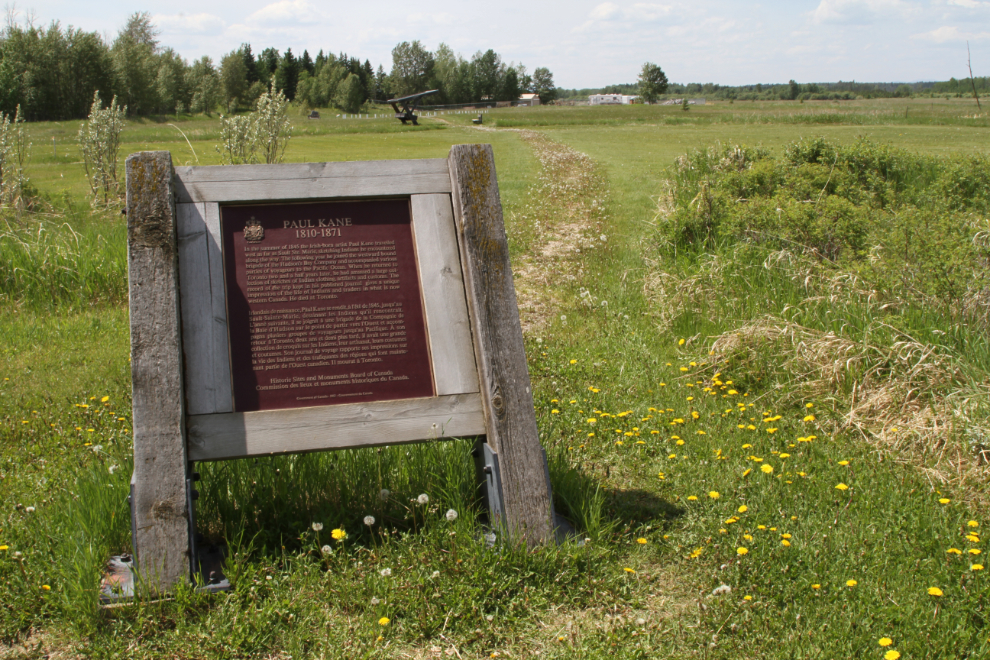
This cemetery contains the remains of 12 unidentified people that were found during construction at a large gas plant to the east in 1979. They were associated with the 1835-1861 post at Rocky Mountain House. Other remains were found at the gas plant in 1969, but I don’t know what happened to them.
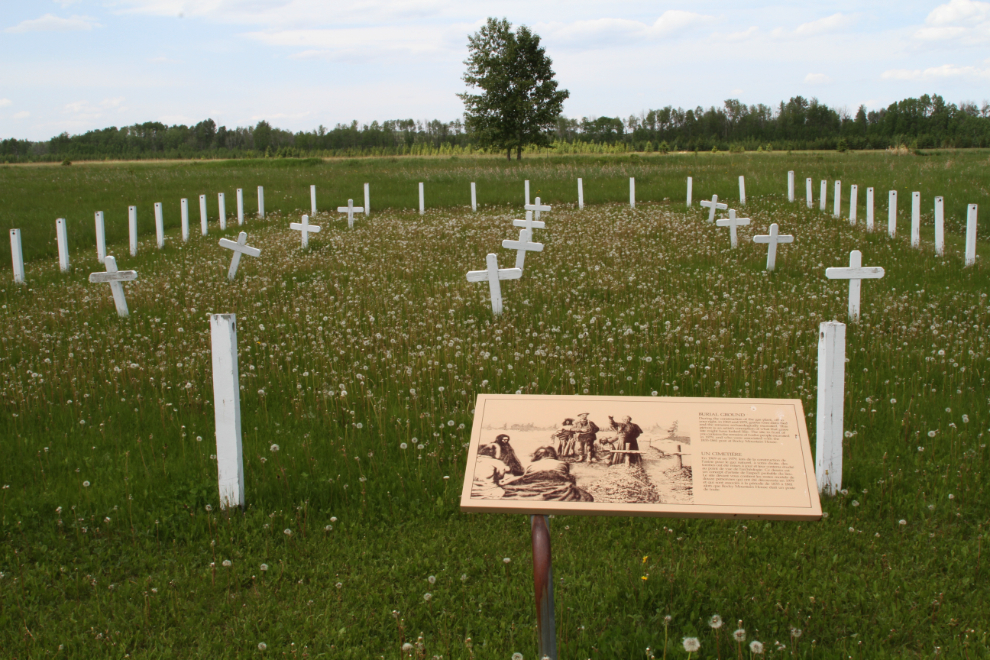
Having finished the Chimney Trail, I continued on to the David Thompson Trail, which is 3.2 km long and should take about 90 minutes. On this trail, I found this memorial plaque, one of many with the same quote that are located in special places across Canada. I find them very powerful, and would very much like to find a list of them (and information about who is installing them) so I can visit as many as possible.
They will never know the beauty of this place, see the seasons change, enjoy Nature’s chorus. All we enjoy we owe to them, men and women who lie buried in the earth of foreign lands and in the seven seas. Dedicated to the memory of Canadians who died overseas in the service of their country and so preserved our heritage.
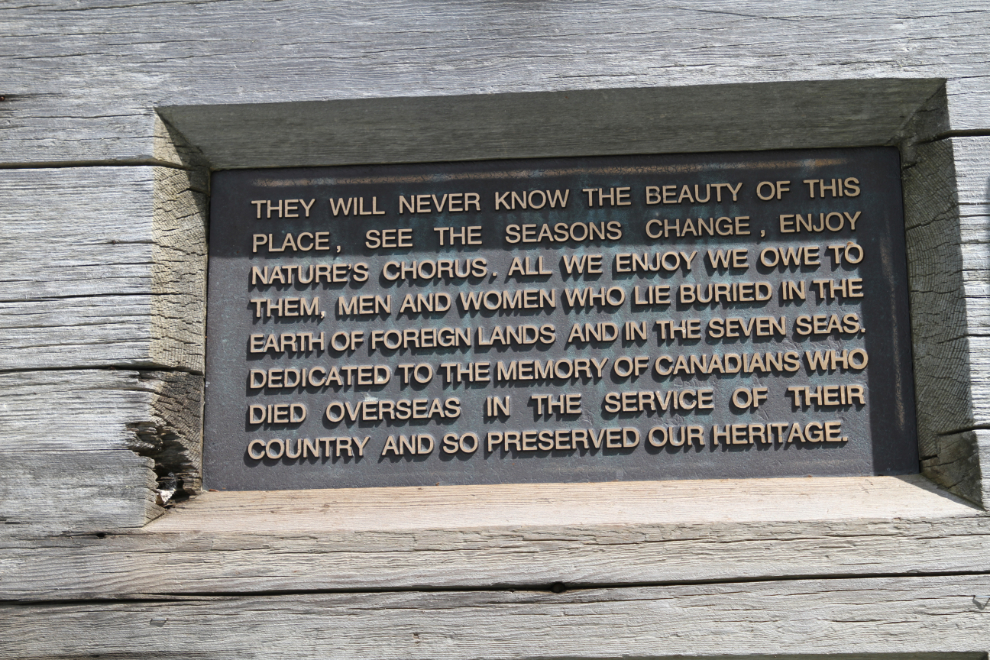
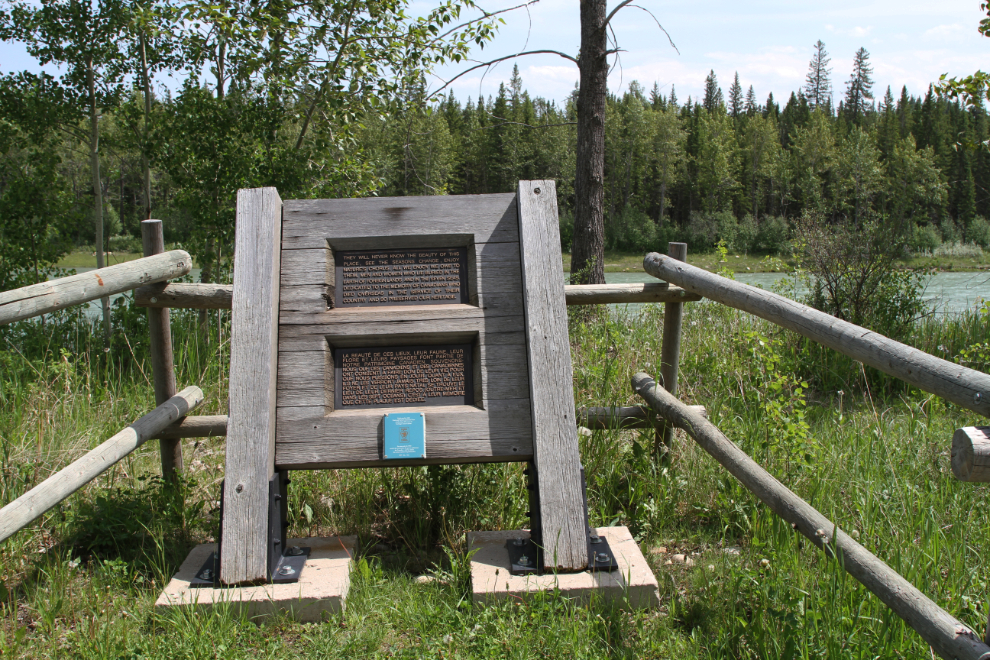
A Metis encampment stopped me to chat with one of the interpreters. The young man took me into one of the tents to see a display of historic beaded leather items associated with Rocky Mountain House. The beading styles indicate that they originated in far-flung regions, and Rocky Mountain House did trade with Indians from a vast area. When I went to take this photo, the interpreter quickly moved a fire extinguisher that would have been in the shot. When I thanked him for doing that, we got into a long discussion about photography, which he got into about 4 years ago and is now quite passionate about. I gave him my card, and rather think we’ll be chatting by email.

Much of the David Thompson Trail goes through forests, and the shade was wonderful on this warm day.
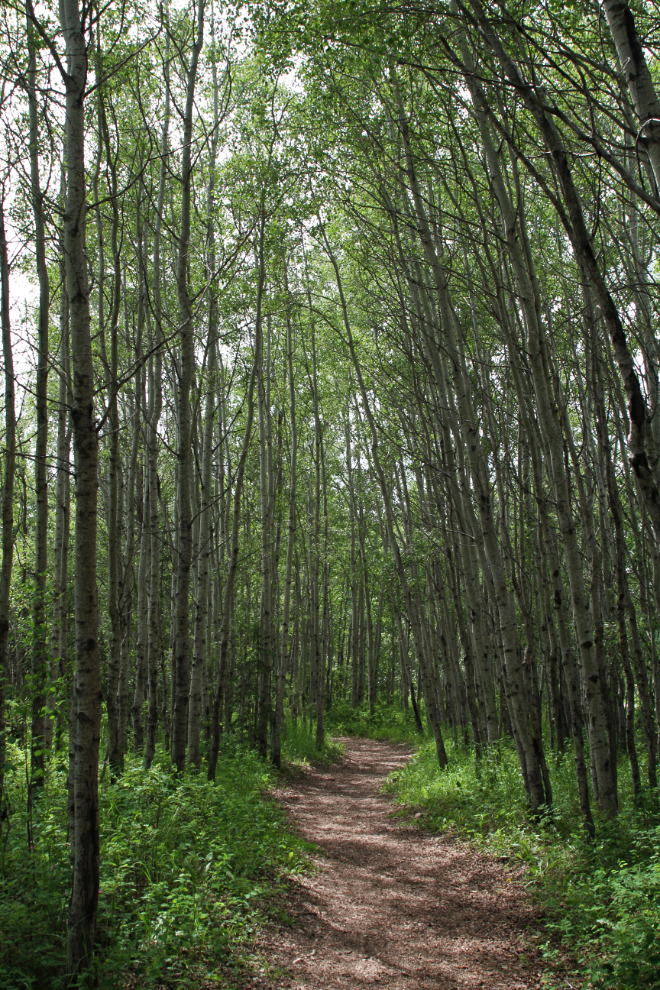
All along the David Thompson Trail, interpretive panels describe plants that can be seen. The stairs seen in the next photo are the only ones on the trail, which is mostly level or nearly so.
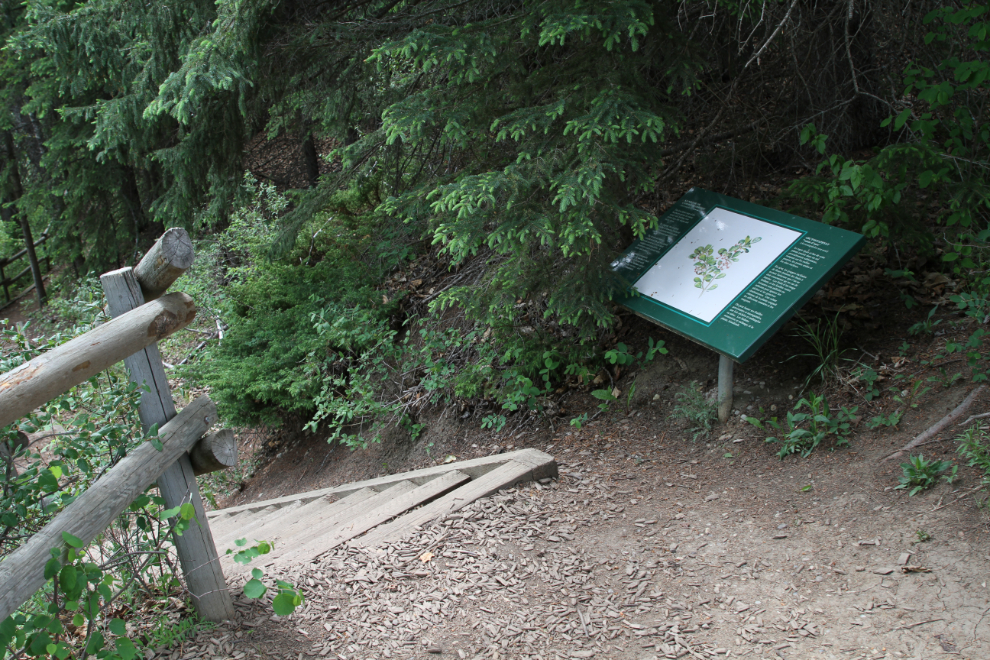
Looking up inside a large teepee was a great subject to create a mild HDR image with.

Parks Canada has a wide range of accommodations available at Rocky Mountain House, including these wall tents.

Only a tiny bit of Brierley Rapids is visible from the historic site side of the river, but it’s sure popular for canoeists to play in – there were almost 50 people with boats pulled out there.
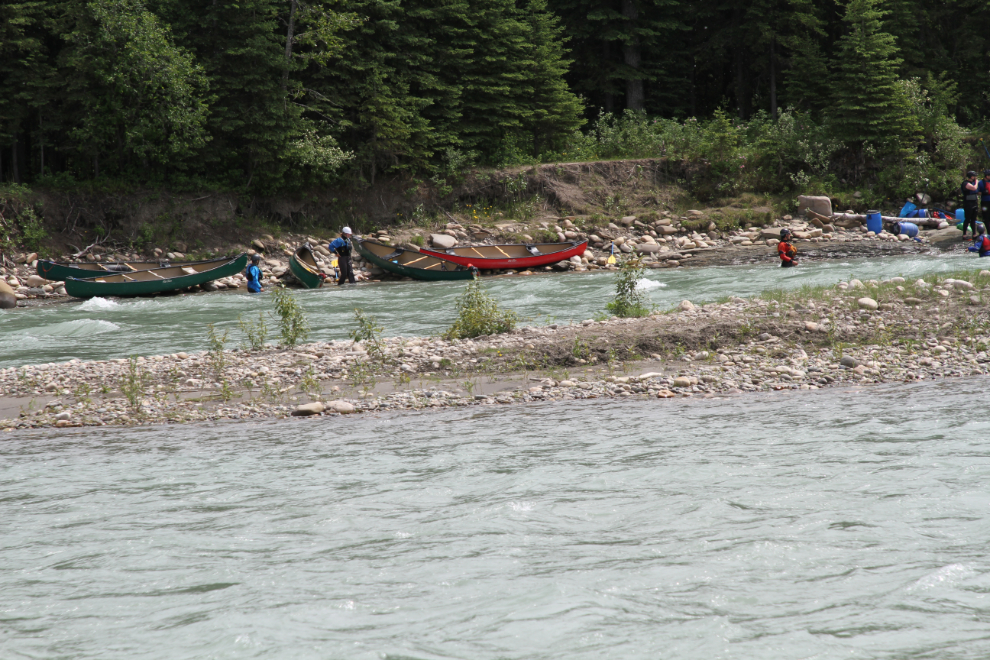
A new administration office is being built at the campground entrance end of the site.
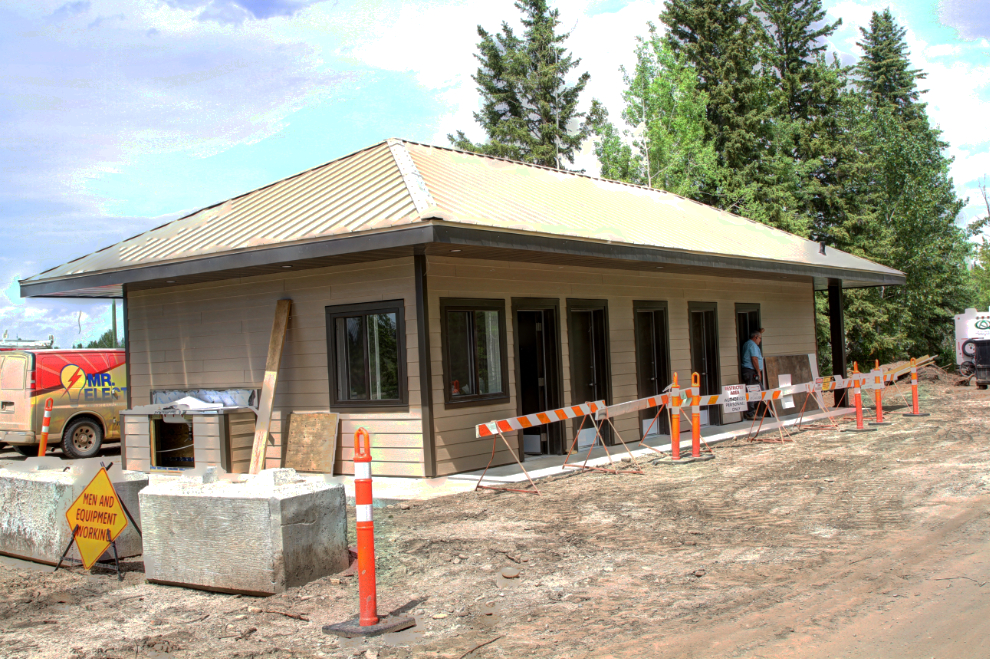
The office is located in a trailer now.
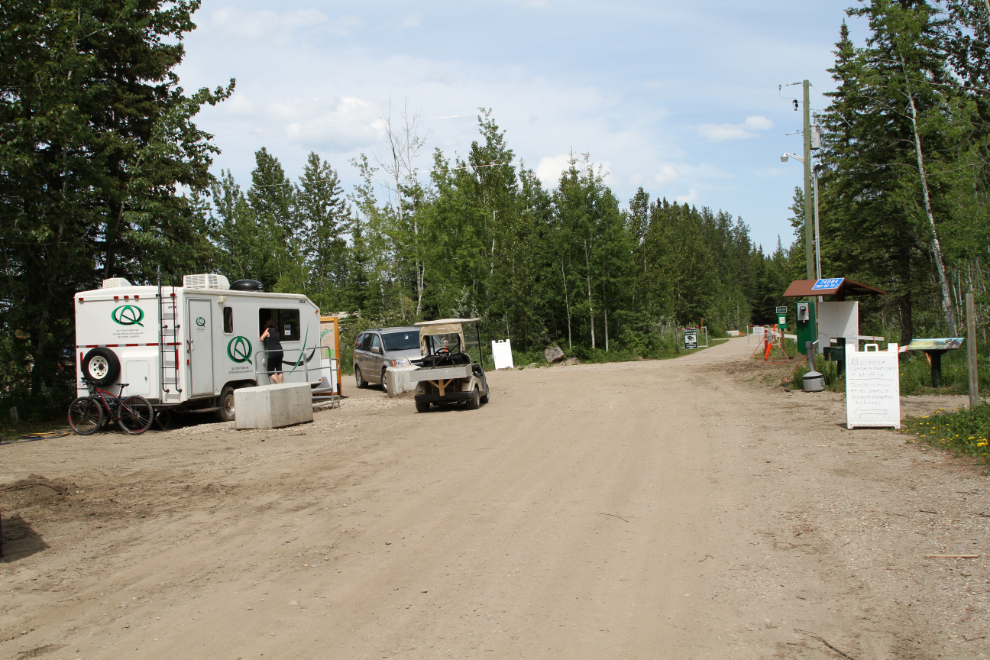
The campground has 24 unserviced sites. I forget the exact price but it’s about $20.
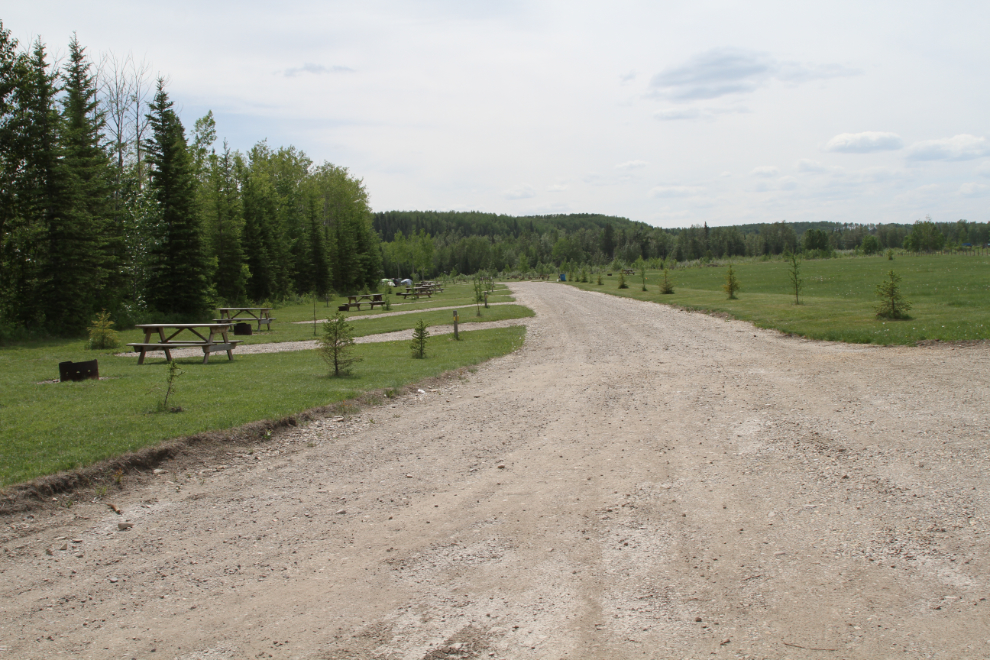
By about this point, I could feel that I was getting dehydrated – it hadn’t occurred to me that almost 3 hours of walking might require some water. I skipped some things that I probably would have seen if I had been better prepared.
Both the North West Company and the Hudson’s Bay Company had forts at Rocky Mountain House. The fort that the Hudson’s Bay Company built in 1799 was named Acton Post, while the smaller one that the North West Company built that year was named Rocky Mountain House, as the intent was that it would draw trade from the west. The pits seen in the next photo are from that first Rocky Mountain House.
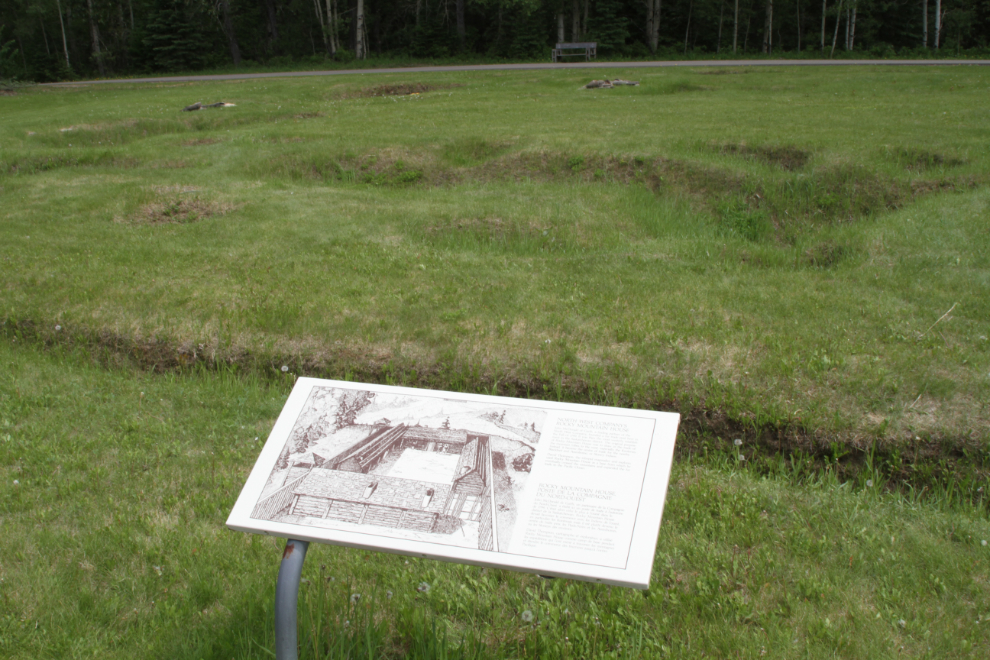
Another pair of Parks Canada’s Red Chairs. Maybe they’re in every park now so nobody feels left out.
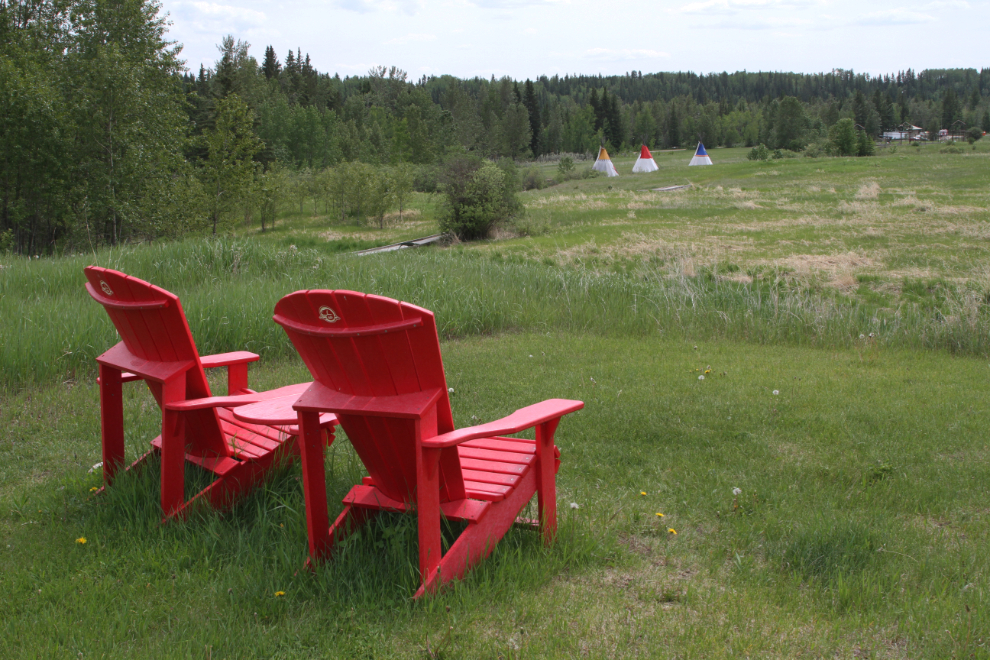
Finishing off back at the Metis camp, with the Hudson’s Bay Company flag on the left and the North West Company flag on the right.
